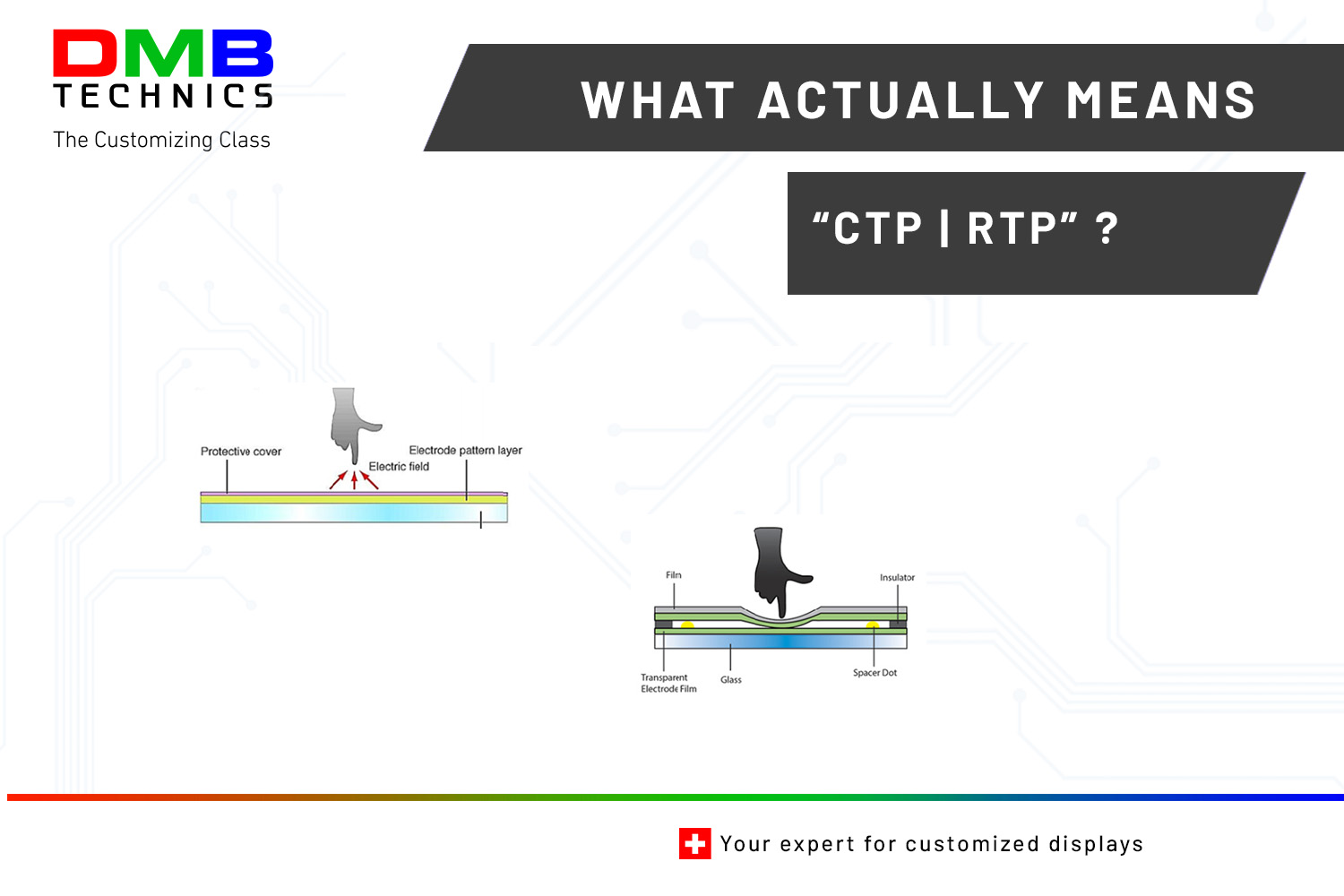CTP
The CTP (Capacitive Touch Panel) is more expensive compared to an RTP, but has a much longer service life. The structure consists of a two-layer coordinate network. The lower electrode (glass with ITO) is divided into columns and the upper electrode into rows. Between them is a non-conductive dielectric (insulated). The capacitance of the crossing points is constantly measured by a circuit. This is attached to the lower electrode. The upper electrode is insulated by a glass plate so that it does not break and the finger glides smoothly over the touch.
This construction makes a CPT more robust than an RTP. Because a finger is electrically conductive, charges can flow off it as soon as it comes into contact with the surface of the touchpad. This causes the electrostatic field (capacitance) between the electrodes to change measurably at the crossing points. Since the capacitances are measured in the entire coordinate network, individual touches can also be registered (multitouch-capable). The disadvantage, however, is that a CTP can only be controlled with conductive objects.
RTP
A RTP (Resistive Touch Panel) is a touch that is cost-effective but has a shorter life span compared to capacitive touch. The principle of operation is simple. The bottom side is almost always a glass plate covered with a very thin conductive ITO (Indium Tin Oxide) layer. The top side is a flexible plate (usually made of plastic). This is covered with an ITO layer on the underside. At the edge, these two plates are connected with a spacer. If an object is now pressed on the top side, it is bent and the two conductive layers touch each other.
The position is determined by first applying a voltage from left to right on the lower layer and milliseconds later from top to bottom on the upper layer. As the two layers briefly make contact at the pressure point, a current flows. This results in a voltage change, which is measured with an ADC circuit and thus reveals the position of the touch. The advantage of an RTP is that you can operate the touch with any object.
CTP
The CTP (Capacitive Touch Panel) is more expensive compared to an RTP, but has a much longer service life. The structure consists of a two-layer coordinate network. The lower electrode (glass with ITO) is divided into columns and the upper electrode into rows. Between them is a non-conductive dielectric (insulated). The capacitance of the crossing points is constantly measured by a circuit. This is attached to the lower electrode. The upper electrode is insulated by a glass plate so that it does not break and the finger glides smoothly over the touch.
This construction makes a CPT more robust than an RTP. Because a finger is electrically conductive, charges can flow off it as soon as it comes into contact with the surface of the touchpad. This causes the electrostatic field (capacitance) between the electrodes to change measurably at the crossing points. Since the capacitances are measured in the entire coordinate network, individual touches can also be registered (multitouch-capable). The disadvantage, however, is that a CTP can only be controlled with conductive objects.
RTP
A RTP (Resistive Touch Panel) is a touch that is cost-effective but has a shorter life span compared to capacitive touch. The principle of operation is simple. The bottom side is almost always a glass plate covered with a very thin conductive ITO (Indium Tin Oxide) layer. The top side is a flexible plate (usually made of plastic). This is covered with an ITO layer on the underside. At the edge, these two plates are connected with a spacer. If an object is now pressed on the top side, it is bent and the two conductive layers touch each other.
The position is determined by first applying a voltage from left to right on the lower layer and milliseconds later from top to bottom on the upper layer. As the two layers briefly make contact at the pressure point, a current flows. This results in a voltage change, which is measured with an ADC circuit and thus reveals the position of the touch. The advantage of an RTP is that you can operate the touch with any object.


